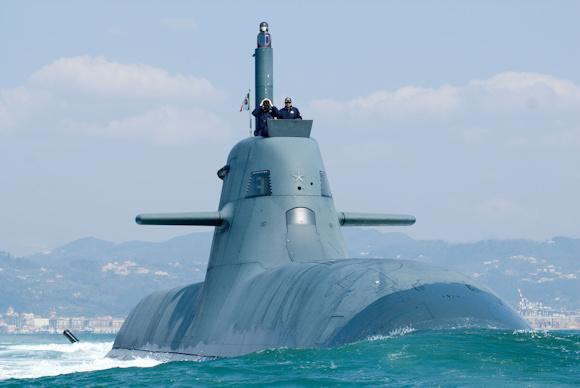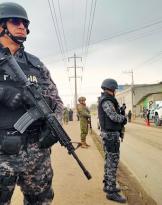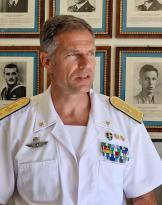There is military excellence that is not celebrated like so many other "colleagues". It is almost never used in the nauseating rhetorical speeches of shift politicians. It is shown with discretion and above all humility. It is the submarine component of the Navy.
I remember when in 2015 the cousins "sank" a US nuclear aircraft carrier during an exercise. The transalpine sboronaggine immediately led to enthusiasms that were soon brought back into the ranks (v.articolo).
Our? They did equally well 7 years before. In silence. At the most a few sly smiles in the face of embarrassed American allies ... It took an Online Defense service to find out what had happened and convince the Navy to make it public (v.articolo).
In the end it is with modesty and confidentiality that those who do not have to prove anything and are aware of their qualities behave; in times of "anti-politics" we could define it as "anti-cialtroneria", the opposite of a national tradition ...
To introduce readers to one of the Italian realities of which we must be proud without doubts or minimal perplexities, we met again the commander of the Italian submariners, Admiral Dario Giacomin. Officer of extraordinary preparation and - like any submariner - with extraordinary human qualities, he responded with availability and clarity to every question.
If it were to sum up in favor of readers, how would you describe a submarine in a few words?
A highly technological means that, even in the current geo-political scenario, continues to play a fundamental strategic role for safeguarding the vital interests of the country and for the pursuit of national security. Our submarines in fact exclusively dominate the Underwater Dimension and, in addition to maintaining the traditional ability to prevent or prevent hostile actions against our territory, they contribute significantly to the control of the Maritime Dimension, which nowadays also develops through operations such as surveillance and the repression of illegal acts such as drug and arms trafficking, smuggling, not to mention human trafficking and terrorism. It is a means which, being able to remain in the sea in a prolonged, continuous and above all discreet manner, is capable of gathering information without altering the behavior of the opponent, in any scenario in which problems for national and maritime security can arise and develop. Another fundamental ability of the submarine is deterrence, which is a fundamental ingredient of the international balance and the true basis on which rest global peace, security and stability.
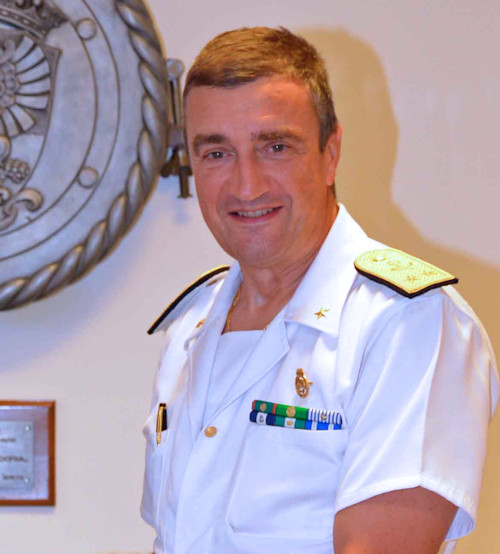
The submarine is a complex weapon system, an inseparable unicum consisting of the platform and the combat system. All of its installations - relating to both the platform and the propulsion, and the combat system - are perfectly and intimately integrated, identifying a single response to all needs in order to constitute the optimal compromise in terms of operational performance including the signatures; "design unity" is therefore a basic technical condition for obtaining effective means.
The submarines, in addition to representing operational excellence, are above all a technological excellence whose design, construction and maintenance requires the use of hundreds of skilled workers, technicians and engineers who together represent a competitive advantage both military and especially industrial for the nation. The U212A program of the 1996 has in fact allowed Italy, to its Construction Industry, high-innovation systems engineering, sector electronics, high-tech special materials but also many realities made by small-medium enterprises ( SMEs), Universities and Research Centers, to recover, investing significant resources, a very important technological gap in a strategic and leading sector for the entire country system such as submarine construction: these advantages must not be lost.
What value does a "submarine component" have today, for a Navy like the Italian one?
The submarine component is, together with the aircraft carrier-loaded military binomial, the element that qualifies the rank of a Navy and more generally of a Defense and that contributes significantly to make the difference in terms of authority and credibility in the security policy and defense of a nation.
It represents the only defense structure capable of performing an effective and credible control of the entire underwater dimension. By appropriately enhancing its best features such as invisibility, great autonomy and the wide choice of available weapons, submarines are effective means in any situation, from the period of peace to that of crisis and therefore of conflict and in any place, especially in a non-permissive environment if not really hostile.
Submarines are extremely significant due to their remarkable ability to intervene but above all for their evident strategic connotation. Therefore they will constitute even more an indispensable component for the protection of national interests.
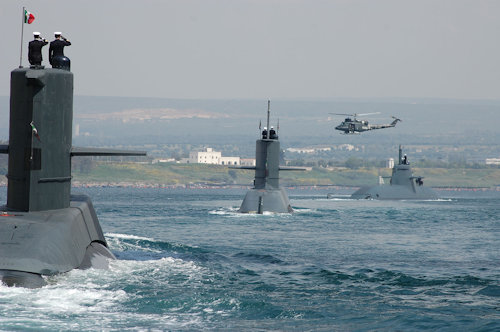
The use, always strategic, of submarines in the coming decades will be very well placed, fully, in the panorama of defense activities being a structure capable of fully fulfilling the "actions" envisaged by LB. Moreover, since no other asset is able to remain so long and without interruption on a target, remaining invisible and therefore without altering the behavior of the observed subject, being able to monitor the "pattern of life", will contribute in a non only important, but often exclusive, to understand the causes of modern conflict and the evolution of international scenarios in order to acquire, in the domains of interest, the knowledge of the abilities, intents and vulnerabilities of others and to use it in order to identify preventively the causes of potential conflict and manage them even before they can manifest.
At the moment Italy, with its just 8 submarines in line (4 class Sauro and 4 class U-212A) faces with determination the commitments and tasks entrusted. The national submarine component expresses, with its approximately 750 men and women (half part of the crews and half employed in ground support activities), an average of at least 11.000 engine hours per year; practically there is no day of the year that does not see at least one of our boats engaged in operational activities.
Therefore it is essential to continue investing in the construction of submarines while continuing to recruit, train and train professionals in the abyss, men and women in different roles and categories.
Towards what "technological performance" is the technological development of recent years concentrated?
Underwater technology has now been oriented in recent decades on the development of highly sophisticated, silent means and equipment, capable of remaining in the sea for months while respecting the environment and the marine ecosystem. Not surprisingly, the main propulsion of the 4 new generation Todaro class submarines is of the AIP (Air Independent Propulsion) type, based on fuel cell technology, a physical principle also applied in space missions. Fuel cells are chemical generators of electrical energy that exploit the reverse principle to that of electrolysis where the electric current splits the water molecules into hydrogen and oxygen. On the contrary, in fuel cells these two gases react with each other producing electricity, necessary to charge the batteries, oxygen and water essential for life on board. In short, a zero environmental impact system.

The concrete result of the AIP system is an autonomy in immersion from 3 to 4 times higher than that of conventional battery boats. With the second series of the Todaro Class (Venuti and Romei) further great steps forward have been made with the adoption of highly innovative technological solutions. In fact, they present significant improvements in the satellite communication system (SHF), in the optical suite (one of the two periscopes has been replaced by a latest generation "optronic" sensor) while the weapon system is based on the new Italian heavy torpedo, the Black Shark Advanced.
Also for the future, the technical characteristics of submarines will have to keep pace and possibly precede the evolution of the strategic scenario. Maximum attention must be maintained for concealment capabilities, therefore even greater autonomy and independence from the surface and increasingly lower signatures, magnetic, thermal and acoustic but also less and less response to optical discovery, radar and by the ever more performing sonar active . Increasing pre-positioning capacity in terms of logistic independence for long-term covert operations, even in non-permissive or hostile waters. The boats will have to be able to operate effectively not only in an isolated manner but also within complex air-naval devices, with up-to-date communication tools and networks, which allow an easy sharing of information relating to the "picture". These instruments, governed by doctrines of disciplined use, will have to put in a position to derive the maximum benefit from the tremendous potential of underwater assets, in the whole range of operations, including the projection of ground forces and support for land operations.
Can you help us better understand what are the "tools" with which a submarine, while remaining hidden, identifies a potential threat?
 The main tools that allow submarines to acquire information about the tactical situation in the action scene, remaining "invisible", are the hydrophonic systems (I refer to passive hulled sonars and towed curtains), capable of capturing all the sources of noise present in the underwater dimension that are localized and identified also thanks to the analysis carried out with the aid of sophisticated software and processed by the hydrophonist personnel who, due to their peculiar capacities, represents a precious and irreplaceable resource. The analysis process is then further refined through the sensors, always passive, of electronic warfare and the most classic of the systems associated with a submarine: the periscope, which, although a precious aid, is always used with great parsimony as its exposure outside from the water it can favor the counter-discovery. The Todaro Class 2 ^ Serie today uses the optronic version, capable of observing, recording and photographing targets at high distances, day and night, thanks to auxiliary and infrared systems. All this happens always remaining under the surface of the sea and therefore completely in an "invisible" way.
The main tools that allow submarines to acquire information about the tactical situation in the action scene, remaining "invisible", are the hydrophonic systems (I refer to passive hulled sonars and towed curtains), capable of capturing all the sources of noise present in the underwater dimension that are localized and identified also thanks to the analysis carried out with the aid of sophisticated software and processed by the hydrophonist personnel who, due to their peculiar capacities, represents a precious and irreplaceable resource. The analysis process is then further refined through the sensors, always passive, of electronic warfare and the most classic of the systems associated with a submarine: the periscope, which, although a precious aid, is always used with great parsimony as its exposure outside from the water it can favor the counter-discovery. The Todaro Class 2 ^ Serie today uses the optronic version, capable of observing, recording and photographing targets at high distances, day and night, thanks to auxiliary and infrared systems. All this happens always remaining under the surface of the sea and therefore completely in an "invisible" way.
The qualities that most affect the common imagery of the submarine crews are their character. I imagine that these qualities are "strengthened and developed" with adequate training. Such as?
In fact the crews of our boats are made up of men and women of the highest specialization and professionalism, strongly motivated, united by a unique distinctive character, determination, spirit of sacrifice, ability to share risks, hardship, effort, in a single word they are submariners. Proud guardians of great and glorious traditions that they carry in their hearts.
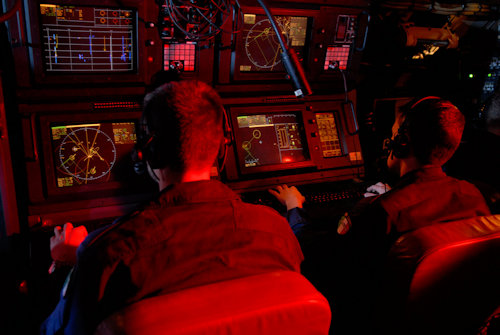
Lwith a strong evolution of missions and vehicle capacities, it undoubtedly involves as much innovation in terms of training and training of submariner personnel. The technological level of the systems and on-board systems, the high automation and the reduced crews require an ever-increasing preparation on the part of the on-board personnel who must materialize in a continuous process based essentially on the intensive use of the simulators at the Submarine School of Taranto, which allow for the testing of extreme maneuvers and situations that could hardly be simulated at sea, on periods of on-board training while sailing, in competition with the Naval Team Units and on a system of continuous verification and evaluation of the preparation of the staff, both individual and team level.
On board then, sailing, due to the limited spaces, a climate very close to the family climate is established over time, always in full respect of the roles, where the staff is confronted, is improved also under the human and character aspect, trying to smooth out the character edges that each of us possesses. All this translates into a team spirit that has no equal!
The training action of the personnel is therefore also aimed at imparting the characteristic principles of the good submariner, a soldier (in a completely indifferent and transparent manner to questions of gender) capable of constantly inspiring his action to a code of behavior that he assumes with awareness membership and participation; a behavior inspired by values and qualities such as spirit of sacrifice and body, mutual respect, discipline, respect for the rules; requirements that unlike the media, never change over time. To emphasize this essential character requirement every submariner, at the end of his entry training in the component, receives the "Decalogue of the submariner" which summarizes in 10 points the moral qualities required by this profession.
 We understand how complex a submarine is and how its crew must be a well-motivated professional; but does it take away a simple curiosity there is also a way to "have fun" on board, in the little free time between rest and watch shifts?
We understand how complex a submarine is and how its crew must be a well-motivated professional; but does it take away a simple curiosity there is also a way to "have fun" on board, in the little free time between rest and watch shifts?
The guard-rest shifts are very intense and well cadenced, the time available for recreation is not so much, also because in the rest period you have to reacquire the physical and mental energies to be able to face the next round at 100%. However, there are living spaces used as common areas, the so-called "squares" which, when not involved in canteens, are used to read a book, watch a movie, play cards, and chat with colleagues. The more adventurous can also devote themselves to doing a bit of sport, such as an exercise bike, step, bar pull-ups, sit-ups, usually using the auxiliary stern in some way used as a gym. In essence, on board one certainly does not get bored, time passes.
Many were the incredible feats that commanders and crews of Italian submarines have completed in the past, especially during the Second World War. Which of them do you think deserves to be reminded to the readers of Defense Online?
In fact, there have been many heroic deeds of Italian submariners and we could dedicate a whole book to each of them. I am thinking for example of the exploits of Carlo Fecia of Cossato, Primo Longobardo, Gianfranco Gazzana Priaroggia, Salvatore Pelosi and, not least, Salvatore Todaro. The latter is a happy symbolic synthesis of the best qualities of our submariners: boldness in the war and humanity, even in the face of newly defeated enemies. Todaro has rescued the crew of an enemy armed steamer that he sank, accepting a great risk for his boat and going to collect the criticisms of the allies of that time, to which he responded from the two thousand years of civilization that they share we Italians. Paradigmatic values of the submariners of yesterday and today, who find updated and punctual feedback in the chronicles of our times and in the activities of the Crews of our ships that, today as then, "leave no one behind".
Another exception submariner to me particularly "close" and whom I had the honor of knowing, is Admiral Vittorio Patrelli Campagnano (Photo), commander between the '42 and the 43 of the Royal Submarine Platinum with which he participated in numerous war actions.
Great Commander and great Man, extremely attentive and sensitive towards his crew, he conducted numerous war actions with attacks on merchant ships and enemy military that earned him numerous decorations. He left us in September of the 2013, but a bit like his grandparents, his "presence" is still in the hearts and minds of us submariners.
See also our previous interview with Admiral Giacomin
(Photo: Marina Military)

